Deciding which compact SUV to choose between the Kia Sportage and Hyundai Tucson can be challenging. At COMPARE.EDU.VN, we provide a detailed comparison to help you make an informed decision. Both models offer compelling features and benefits, but understanding their differences is crucial for selecting the one that best fits your needs. Explore our analysis of vehicle comparisons, car model reviews, and automotive insights to discover the perfect match for your lifestyle.
1. Key Differences Between Kia Sportage and Hyundai Tucson
While the Kia Sportage and Hyundai Tucson share a common foundation, thanks to the collaborative efforts of Kia and Hyundai in developing their chassis, engines, and gearboxes, they present distinct characteristics. These differences extend beyond mere aesthetics, influencing the overall driving experience and interior ambiance.
1.1. Exterior Design Philosophy
Kia and Hyundai employ unique design languages to distinguish their crossovers. Hyundai embraces “Sensuous Sportiness,” while Kia adopts “Opposites United.” In practice, the Tucson stands out with its bold parametric jewel pattern grille, seamlessly integrating the headlamps into the grille’s design. The Tucson’s flared, asymmetrical wheel arches and numerous body creases contribute to its assertive presence. Conversely, the Sportage exudes a more restrained and conservative design, offering a balanced and sophisticated aesthetic.
1.2. Interior Design and Technology
The interiors of the Sportage and Tucson diverge in their approach to design and technology integration. The Tucson’s interior prioritizes a multi-layered design, creating separate cockpits for the driver and passenger. While visually appealing, it lacks the high-tech sophistication found in the Sportage. The Sportage boasts a panoramic twin-screen display that dominates the cabin, complemented by a digital touchpad for controlling climate and other functions. This setup offers a modern and intuitive user experience.
1.3. Interior Space and Comfort
Both the Tucson and Sportage offer generous interior space, owing to their shared chassis and nearly identical dimensions. The Tucson provides slightly more rear headroom due to its marginally taller height. However, both vehicles comfortably accommodate five passengers, making them ideal family crossovers.
2. Practicality and Cargo Space Comparison
When it comes to practicality, both the Kia Sportage and Hyundai Tucson offer competitive features. However, variations exist in cargo space depending on the drivetrain configuration.
2.1. Cargo Volume and Configurations
The Sportage’s cargo volume varies based on the engine type. The standard petrol engine provides 591 liters of space. The hybrid version reduces this slightly to 587 liters, while the plug-in hybrid offers 540 liters. The Tucson boasts a larger cargo area, with 620 liters in the standard configuration and 558 liters in the plug-in hybrid. Both models offer a maximum cargo capacity of around 1800 liters with the rear seats folded down.
2.2. Practicality Features
Both vehicles include 40/20/40 split-folding rear seats, allowing for flexible cargo and passenger configurations. Twin boot floor setups enable raising the loading bay or concealing items underneath. An optional electric tailgate enhances convenience, particularly given the vehicles’ substantial size.
2.3. Cabin Storage Solutions
In terms of front cabin storage, both models offer a large center console box, shallow door pockets, and a sizable glove box. However, the Sportage excels in rear passenger convenience with USB sockets integrated into the front seat sides and hooks on the front headrests. The Sportage also features retractable cupholders for versatile storage.
3. Engine Options and Performance
A significant aspect of the co-development between Kia and Hyundai is the sharing of drivetrains, resulting in similar engine and gearbox options for the Sportage and Tucson.
3.1. Engine Choices
Both models offer a 1.6-liter petrol engine as their base, producing 150hp and achieving around 42mpg. Hyundai provides a 180hp version in the sportier N Line Tucson models. The Sportage includes a 1.6 CRDi diesel option with 134hp, rated at 54mpg. This diesel variant provides an efficient choice for those who frequently drive long distances.
3.2. Hybrid and Plug-In Hybrid Options
Full hybrid versions of both vehicles boost power to 230hp and improve fuel efficiency to around 50mpg. Plug-in hybrid variants feature larger batteries, providing an electric-only range of up to 38 miles and a claimed fuel economy of over 200mpg. Both models offer optional four-wheel drive systems and automatic gearboxes.
3.3. Performance and Efficiency
The engine options prioritize fuel economy over outright performance, aligning with the vehicles’ purpose as family cars. While the 1.6-liter petrol engine may feel strained when pushed hard, it remains quiet at lower speeds. The automatic gearbox can exhibit occasional hesitation, especially in the hybrid models.
4. Trim Levels and Features Comparison
The Kia Sportage and Hyundai Tucson offer various trim levels, each with a distinct set of features. Although they share similar spec sheets, differences become more apparent as you move up the range.
4.1. Base Models
The Kia Sportage generally has a slightly lower starting price than the Hyundai Tucson. A base SE Connect Tucson comes standard with twin 10-inch digital displays, whereas a basic Sportage has analogue instruments and a smaller central touchscreen.
4.2. Standard Features
Both vehicles come well-equipped with alloy wheels, smartphone mirroring, dual-zone climate control, cruise control, and a rear parking camera as standard features.
4.3. Upper Trim Levels
Sporty trim levels, such as the N Line for the Tucson and GT Line for the Sportage, offer mainly visual enhancements. However, the Tucson N Line is available with a slightly more powerful engine. These models typically include larger wheels, keyless entry, and upgraded upholstery. The Hyundai Tucson offers heated front seats at these levels.
4.4. Top-Tier Features
At the top of the range, the Kia Sportage feels more technologically advanced, featuring a haptic infotainment control panel and a remote smart parking assist function.
4.5. Safety Features
Both vehicles offer extensive safety equipment. While the Sportage has not yet been crash-tested by Euro NCAP, the Tucson has received a 5-star rating, and the Sportage is expected to achieve a similar score.
5. Driving Experience and Comfort
Both the Kia Sportage and Hyundai Tucson provide a similar driving experience, characterized by spaciousness, comfort, and refinement.
5.1. Overall Driving Characteristics
The Tucson and Sportage offer a commanding driving position with excellent visibility. While the Peugeot 3008 and Ford Kuga may provide a more engaging driving experience, they lack the calming refinement of these Korean crossovers.
5.2. Engine and Gearbox Performance
The 1.6-liter petrol engine paired with the automatic gearbox can feel somewhat coarse when pushed hard. However, it operates quietly at city speeds. The gearbox can be hesitant at times, especially in hybrid models, as the system balances electric and petrol power.
5.3. Ride Comfort and Handling
The Kia Sportage provides a more upmarket ride, feeling softer and more comfortable with lighter steering. The Hyundai Tucson offers a slightly firmer feel with less body roll during cornering and more feedback from the road. The Tucson, particularly in N Line trim, may appeal to those seeking a slightly more engaging driving experience.
6. Warranty and Reliability
Kia and Hyundai provide excellent warranty options, adding to the appeal of both the Sportage and Tucson.
6.1. Warranty Coverage
The Kia Sportage boasts a 7-year, 100,000-mile warranty, while the Hyundai Tucson offers 5 years with unlimited mileage.
6.2. Reliability Ratings
While both models are relatively new, early reliability surveys indicate positive trends. The Hyundai Kona topped a 2021 reliability survey, and the previous generation Kia Sportage ranked 9th.
7. Detailed Comparison Table: Kia Sportage vs. Hyundai Tucson
To provide a clearer comparison, here’s a detailed table highlighting the key attributes of both vehicles:
| Feature | Kia Sportage | Hyundai Tucson |
|---|---|---|
| Design Language | Opposites United | Sensuous Sportiness |
| Exterior Styling | Restrained, Conservative | Bold, Parametric Jewel Grille |
| Interior Design | High-Tech, Twin-Screen Display | Multi-Layered, Dual Cockpit |
| Base Engine | 1.6L Petrol, 150hp | 1.6L Petrol, 150hp |
| Diesel Option | 1.6L CRDi, 134hp | Not Available |
| Hybrid Options | Full & Plug-In Hybrid | Full & Plug-In Hybrid |
| Cargo Space (Std) | 591 Liters (Petrol) | 620 Liters |
| Cargo Space (PHEV) | 540 Liters | 558 Liters |
| Infotainment | Haptic Control Panel | Twin 10-inch Digital Displays (Base) |
| Warranty | 7 Years / 100,000 Miles | 5 Years / Unlimited Mileage |
| Driving Feel | Softer, More Comfortable | Firmer, More Road Feel |
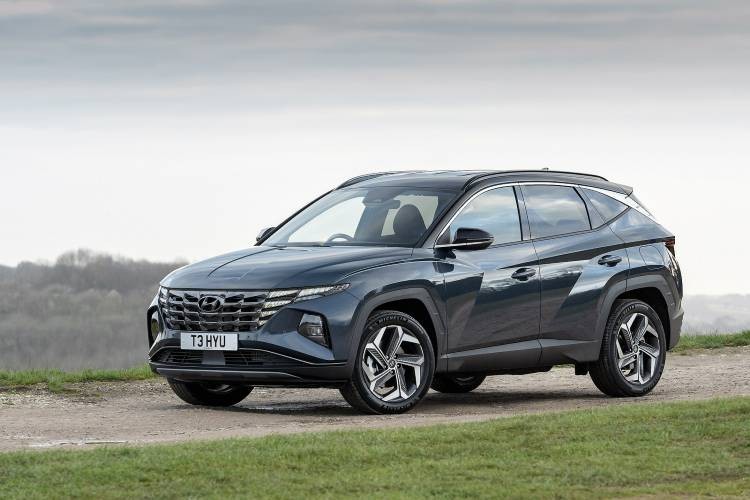
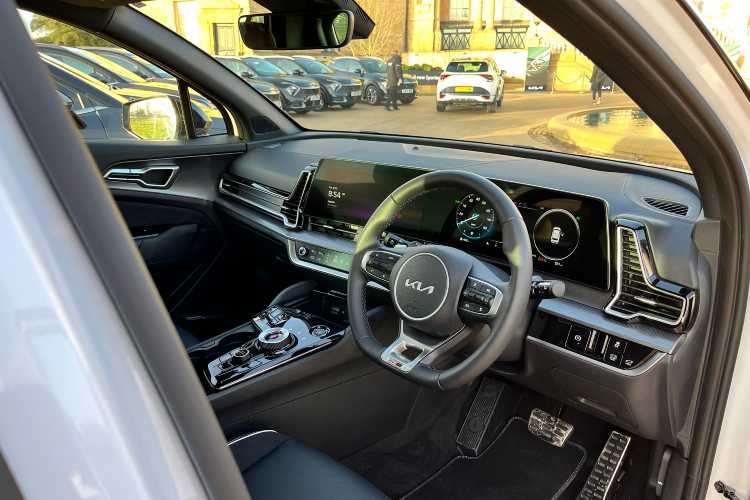
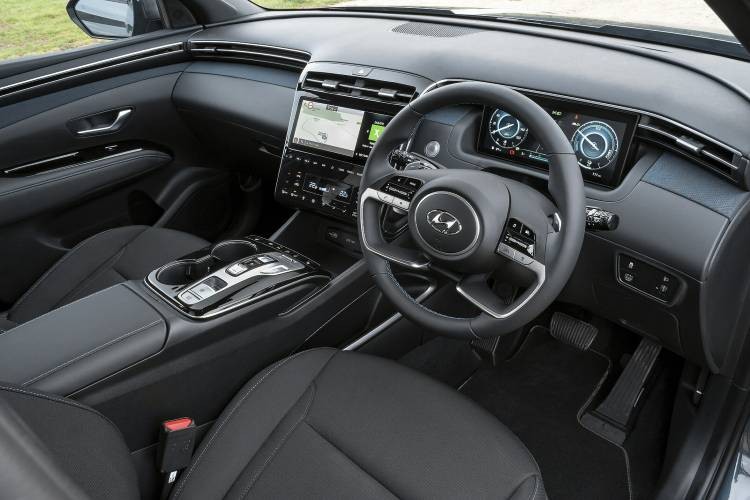
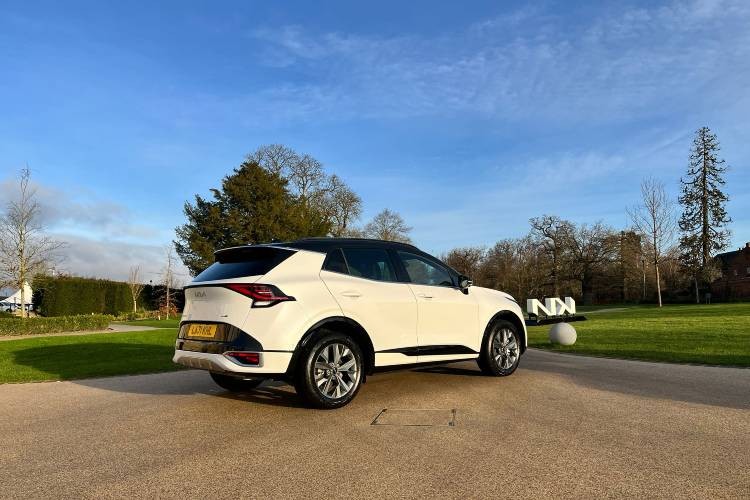
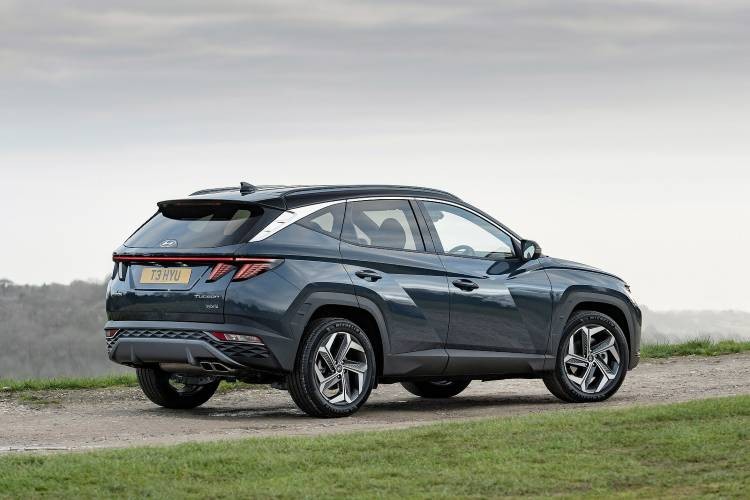
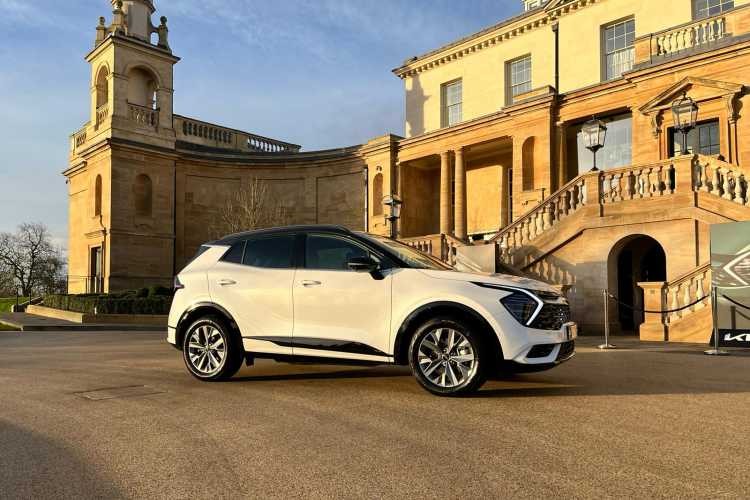
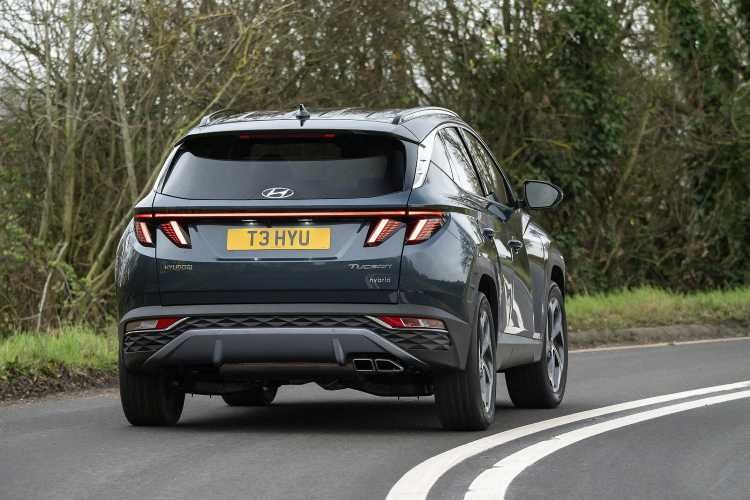
8. Making the Right Choice
Selecting between the Kia Sportage and Hyundai Tucson depends on individual preferences and priorities.
8.1. Aesthetic Preferences
If you prefer a bold and distinctive exterior, the Hyundai Tucson is the better choice. If you favor a more understated and refined design, the Kia Sportage is the more suitable option.
8.2. Technology and Features
For those prioritizing advanced technology and a modern interior, the Kia Sportage excels with its twin-screen display and haptic control panel. If you prefer a simpler and more straightforward interior layout, the Hyundai Tucson is a solid choice.
8.3. Driving Dynamics
If you value a comfortable and relaxed ride, the Kia Sportage provides a smoother experience. If you seek a slightly more engaging driving feel with enhanced road feedback, the Hyundai Tucson is the better option.
8.4. Practical Considerations
Both vehicles offer ample space and practical features, but the Hyundai Tucson provides slightly more cargo room in its standard configuration. Consider the specific needs of your lifestyle when evaluating practicality.
9. Expert Reviews and Additional Resources
To further assist in your decision-making process, consult expert reviews and comparisons from reputable automotive sources. These resources provide valuable insights into the real-world performance, reliability, and ownership experience of both the Kia Sportage and Hyundai Tucson.
9.1. Compare.edu.vn Resources
Visit COMPARE.EDU.VN for detailed comparisons, user reviews, and comprehensive analyses of various vehicles, including the Kia Sportage and Hyundai Tucson. Our platform offers unbiased information to help you make an informed decision.
9.2. Contact Information
For personalized assistance and expert advice, contact our team at COMPARE.EDU.VN.
- Address: 333 Comparison Plaza, Choice City, CA 90210, United States
- WhatsApp: +1 (626) 555-9090
- Website: COMPARE.EDU.VN
10. Conclusion: Which Crossover Reigns Supreme?
Ultimately, the choice between the Kia Sportage and Hyundai Tucson comes down to personal preferences. Both vehicles offer compelling features, excellent value, and a satisfying ownership experience.
10.1. Recap of Key Differences
The Kia Sportage stands out with its high-tech interior, longer warranty, and slightly more comfortable ride. The Hyundai Tucson appeals with its bold exterior design, ample cargo space, and engaging driving dynamics.
10.2. Final Recommendation
Consider your priorities, evaluate the features that matter most to you, and test drive both vehicles before making a final decision. With the right information and careful consideration, you can confidently choose the crossover that best suits your needs and lifestyle.
11. FAQs About Kia Sportage vs. Hyundai Tucson
11.1. Is the Kia Sportage bigger than the Hyundai Tucson?
No, the Kia Sportage and Hyundai Tucson are very similar in size, as they share the same platform. The Tucson is marginally taller, offering slightly more rear headroom.
11.2. Which car has better fuel economy, the Sportage or Tucson?
Fuel economy is comparable between the two, with both offering similar MPG ratings for their respective engine options. Hybrid versions offer improved fuel efficiency.
11.3. Does the Hyundai Tucson have more cargo space than the Kia Sportage?
Yes, the Hyundai Tucson generally offers slightly more cargo space than the Kia Sportage, especially in standard configurations.
11.4. Which car has a better warranty, the Sportage or Tucson?
The Kia Sportage has a longer warranty, offering 7 years or 100,000 miles, compared to the Hyundai Tucson’s 5 years with unlimited mileage.
11.5. Which car is more expensive, the Sportage or Tucson?
The Kia Sportage typically has a slightly lower starting price, but this can vary depending on trim levels and options.
11.6. Which car has a more comfortable ride, the Sportage or Tucson?
The Kia Sportage generally provides a more comfortable ride, with a softer suspension setup.
11.7. Which car is better for city driving, the Sportage or Tucson?
Both cars are well-suited for city driving, offering good maneuverability and a comfortable driving experience.
11.8. Which car is better for long road trips, the Sportage or Tucson?
Both cars are suitable for long road trips, offering comfortable seating, ample space, and advanced safety features.
11.9. Do the Kia Sportage and Hyundai Tucson share the same engines?
Yes, both models share the same engine options, including a 1.6-liter petrol engine, hybrid options, and in some markets, a diesel engine.
11.10. Which car has better technology, the Sportage or Tucson?
The Kia Sportage often features more advanced technology, such as a haptic infotainment control panel and remote smart parking assist.
Remember, compare.edu.vn is here to help you navigate the complexities of car comparisons. Whether you’re weighing the pros and cons of the Kia Sportage vs. Hyundai Tucson, or exploring other vehicle options, our comprehensive resources and expert insights will guide you towards making the best decision for your needs.